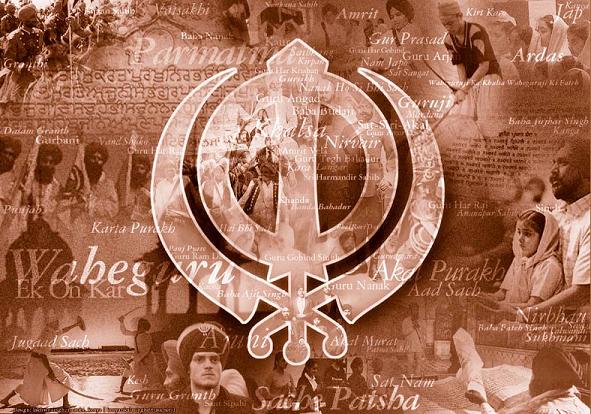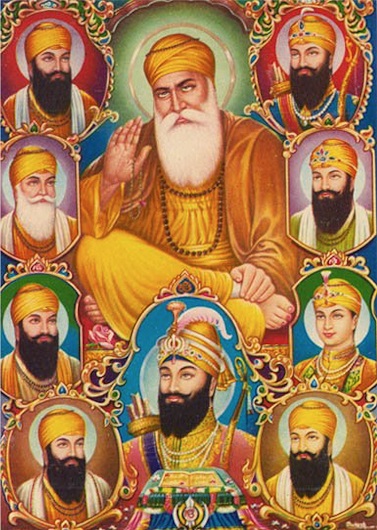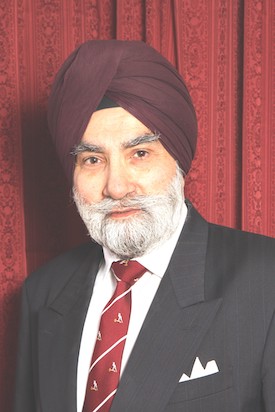The background
The Golden Temple: Its Theo-political Status was the heading of a long essay by Sirdar Kapur Singh, first published in The Sikh Review of August 1984. The essay summarised Sikh history and tradition in the context of the Sikh doctrine of Double Sovereignty asserting Sikh independence in temporal and spiritual (Miri-Piri) matters.
We are reminded of this doctrine when we look at the current and future relationship between the Sikhs and India as a Hindu Rashtra (nation).
The real intentions of the Indian [Brahmanic] leaders were revealed soon after the first few sessions of the Indian National Congress founded in 1885. Introduction of word-concepts like Bharat Mata (for India) in patriotic language and songs, using Vedic idiom were early warning signs of what lay ahead for Indian minorities.
We need to remind ourselves that the vast majority of Hindu Indians trapped in the caste hierarchical divisions are as much victims of the Vedic system as the religious minorities. All Hindus cannot be lumped together. Caution is needed when referring to the Brahmanic domination of the Indian society.
The Rashtriya Swayamsevak Sangh (RSS) was founded in 1925. The declared objective was to promote the ideals of upholding Indian culture and the values of a civil society and propagating the ideology of Hindutva, to strengthen the majority Hindu community.
The first minority to rebel against these moves and motives were the Muslims of India. The Sikhs were the only other significant Indian minority with an independent ideology and institutions, and a tradition of self-rule. To begin with, the cautious Sikh reaction was the publication Hum Hindu Nahi by Bhai Kahn Singh Nabha.
For the Sikh leaders, the realization came too late. Following the Punjabi [language based] Suba agitation, the Sikh unrest continued due to a combination of religious, economic and political grievances. It led to the Sikh genocide which started in June 1984 and continued over a period of ten years. A timely realisation on the part of Sikh leaders of the extremes to which the Hindutva politics would go could have at least made them look for some sort of Constitutional safeguards for the Sikhs. Instead, they relied on just verbal promises by the crafty Congress leaders of the time.
As India heads towards becoming a Hindu Rashtra (Nation), so the Sikh resistance is growing. The Hindutva leaders are aware of this and corruption of Sikh ideology, tradition and history has been high on their agenda. Opposed to this takeover bid by the Hindutva forces is the next generation Sikh scholars in the diaspora. They are rebelling against the Vedic influence on Sikh thought through sants in deras preaching Nirmala literature.
Sikh political successes in the diaspora and the growing demand for justice for the Sikhs in India are seen as serious challenges by the present Indian administration. With the above background, we look at some specific current issues.
Who are the true separatists?
The clouds of forced unity are descending and diversity is crying out in agony.
When the great poet, Bhai Santokh Singh, wrote the above verse, he was describing the plight of diverse Indian communities, especially the Brahmanic Hindus of India under Mughal rule. Emperor Aurungzeb was determined to convert India into a one religion state. Bhai Santokh Singh would have repeated the same verse today as the dark clouds of Hindutva gather over India.
On Sunday 21 January 2018, Rashtrya Swayamsewak Sangh (RSS) chief Mohan Madhukar Bhagwat addressed an audience of 50,000 at Guwahati. He explained RSS views on traditional and modern education, and said that all people living in India are Hindu in terms of identity and nationality (Hindustan Times). Recently, once again, he announced that everyone who lives in India is Hindu by identity (Hindustan Times, 19 September 2018). He seems to be insisting on Hindu dual-identity tag for
religious communities like Muslims, Sikhs, Budhists, Christians, Jains etc.
Normally, one would ignore such nonsense, except that RSS is the militant wing of BJP the ruling political party. Thousands of RSS trained (brainwashed?) volunteers are pushing their political manifesto. They arm themselves with lathis, heavy sticks often used by Indian police to control crowds. Reports of the atrocities committed by these Hindutva thugs against the most disadvantaged communities and minority communities make regular headlines.
For nearly a century, the Hindutva juggernaut has been rolling towards its objective of a Hindu Rashtra. The Sikh miri-piri tradition is opposed to any moves by the state towards totalitarian rule under any pretext. After the Mughal attempts to convert India into a religion state, and the British colonial rule, a Hindu Rashtra will eventually lead to disintegration of the country.
Sikh thought believes in voluntary association of diverse cultures and peoples (qaums) under secular rule of law. The Khalsa Raj of Maharaja Ranjit Singh epitomised such a commonwealth of religio-cultural communities in the north-western Indian sub-continent.
Sikhs of Guru Nanak-Gobind Singh have led rebellions against regimes attempting to exercise control over the freedom and will of others. In the current clash between egalitarian Sikh ideology which brings diverse people together, and the Hindutva objective of a Hindu rashtra, it is clear who the separatists are! They are those bent on replacing the secular Indian commonwealth of religions and diverse communities with a Brahmanic Hindu state.
The politics of words such as separatists needs to be understood. When freedoms and human rights guaranteed by the United Nations and the secular Constitution of India are abused by an elitist Brahmanic caste and class, then theirs are the acts of separatism not of those asserting their identity rights as distinct communities. Yet, for Hindutva leaders, the Sikhs who have a history of resisting absolutism in any form, are the separatists.
The danger now is that the history of self-destruction of the Mughal and colonial empires can be repeated. Resistance to the Hindutva agenda attempting to force Indian diversity into the straight-jacket of a Hindu rashtra is likely to grow unless democratic safeguards and sense prevail.
The enemy within
Statesmen like Roman, Marcus Cicero, warned against the enemy within. He is capable of more damage than the enemy at the gates. The enemy within is more dangerous than the enemy at the gates who carries his banner openly. The enemy within dresses, talks and walks around freely like those around him. He wins their trust and is accepted as one of them! Often, he is clever and better educated and aspires to some leading position in the community.
For the Sikhs today, the enemy within are Sikhs in appearance but who preach Brahmin Snatan Dharam. Their background is the long line of Udasis and Nirmalas who managed to get a foothold in Sikh centres and sangats. The Nirmalas wrote Sikh literature according to own Vedic bias in the 18th and 19th centuries. The enemy within appeared almost as soon a Guru Nanak Sahib passed on the Gurgadhi to Bhai Lehna by anointing him as Guru Angad. Baba Sri Chand, the elder son of the Guru Nanak Sahib started his own cult of opt-out Udasis. Such a sanyasi life-style was more acceptable to the Brahmin who got his first foothold in the Guru family.
Thus started the grand conspiracy to hi-jack the Sikhi of Guru Nanak. To quote a passage from related article by Dr Karminder Singh of Malaysia:
The ultimate goal of such a conspiracy is to rob Sikhi of its distinctiveness; to assimilate Sikhi into the larger fold of an antiquated and rejected system; to cut the philosophical roots of Sikhi and to undo the 239 years of work [of interpreting Sikhi] that had been painstakingly undertaken by our Gurus.
(The Hijackers of Sikhi*)
In more recent times, the politicised deras and gurudoms have joined forces with the Sant Samaj influential in Sikh central institutions. The process of Sikhi assimilation into Hindutva seems to be nearing completion.
When discussing a Brahmanic Hindu Rashtra which is being forced on all Indian citizens, we need to know more about Hinduism. According to one source, scholars regard Hinduism as a fusion or synthesis (milghoba in Panjabi) of various Indian cultures and traditions, with diverse roots and no founder. It is a web – a jaal - in which the masses have been enmeshed for thousands of years since the times of the Vedas starting about 3,500 years ago. The attempted rationalisation by the later Vedanta (Upnishadic literature) did not clear the web or the thick fog (dhund according to Bhai Gurdas). In fact, the intellectual acrobatics of the Upnishads to authenticate the Vedic mantras, incantations, myths and ritualism further strengthened the Brahmanic hegemony.
The whole Vedic system is designed to keep the Brahmin at the top, controlling both the rulers and the public. That is until the Sikh – the seeker of Truth - came on the scene to challenge the monopoly of the Brahmin. Guru Nanak started his mission by rejecting the jeneu, the sacred thread symbolising high and low castes. The Brahmin never forgot that rejection.
The 550th Guru Nanak Parkash Anniversary gives the enemy within another opportunity to complete the process of assimilation of Sikhi into Hindutva.
The Singh Sabha reform movement started in 1873 as a reaction to the activities of other religions seeking converts. Arya Samaj, a Hindu reform movement preaching the authority of the Vedas, was active in Punjab. It was founded by Dayananda Saraswati a sannyasi, on 7 April 1875, in Bombay and later announced more formally in Punjab in 1877 at Lahore. His main publication Satyarath Prakash made derogatory comments about other religions, including Sikhi e.g. at page 443 (chapter IX), he wrote that Guru Nanak did not possess any learning.
Many Hindus regarded Sikhism as a sect of Hinduism. To clarify this confusion, Bhai Kahn Singh Nabha wrote, "Hum Hindu Nahi" (We i.e. Sikhs, are not Hindus) in 1898, giving comprehensive examples from Sri Guru Granth Sahib and Sikh tradition of the sovereignty of the Nirmal Panth (later Khalsa Panth) of Guru Nanak. This clarification also exposed the ideological enemy within who was capable of more lasting damage than any external threat.
As we have seen, Brahmanic thought had already infiltrated Sikh ideology through the influence, first of the Udasi cult of Baba Sri Chand and later the take-over of gurdwaras by the ascetic Nirmalas as they started arriving in Panjab from places like Benaras. For more than 50 years after the fall of the Khalsa Raj led by Baba Banda Singh Bahadur in 1716, the main-stream Khalsa Sikhs were too busy fighting the Mughal oppression. The Mughal rulers had the support of Hindu rajas and their own Hindu ministers (diwans). In fact, the first Sikh Ghalughara (holocaust) was led by Diwan Lakhpat Rai of Lahore in 1746.
During the 60 years of Khalsa sangharsh (freedom struggle), the Udasis and later the Nirmalas had no difficulty in taking over Sikh centres. They wrote Sikh history according to own Vedic bias. Yet, there is hardly any mention of Nirmalas in Sikh tradition before the 19th century. They were liberally patronised by the Sikh chiefs content that they were looking after gurdwaras. As mentioned by some sources, after the evacuation of Anandpur in 1705, some Sikhs went to places like Hardvar, Allahabad and Banaras and set up deras. Sangats had been set up in these parts during the parchar tours of Guru Tegh Bahadur ( see author's research paper - Life and the Unique Martyrdom of Guru Tegh Bahadur (1621-1675)). In time, due to local Vedic milieu, their successors started preaching a blend of Sikhi and Vedanta.
When Sikhs re-established themselves in Punjab towards 1770, the successors of those Sikhs returned to Punjab. With their knowledge of Vedic lore they had no difficulty in taking over control of many gurdwaras and Sikh centres from the Udasis. Scholars like the poet Bhai Santokh Singh belonged to this school. Their influence in Sikh centres continues to this day through sants and deras despite the reforms introduced by the Singh Sabha movement.
It is possible that next generation Sikh scholars can put the Singh Sabha movement started in the late 20th Century, back on track. The challenge of Hindutva can also add to the urgency to re-discover the Nirmal Panth of Guru Nanak and to recover the Sikhi lessons learnt during the Guru period of 239 years from 1469 to 1708 CE.
Conclusion: Conflict, Causes & Cure
Hindutva objective is the creation of a Hindu Rashtra. On the other hand, Sikhi temporal objective proclaimed by Guru Arjan Dev ji, is halemi raj in which all live without fear; a secular state in which there is rule of law and diverse communities feel secure. So, it is not surprising that theo-political Sikhi which has given rise to egalitarian institutions and distinct Sikh identity are seen as obstructions in the path of the Hindutva objective of a Hindu rashtra.
History is witness that when diversity is threatened by an absolutist state, the Sikhs have opposed it and other freedom loving people have joined them. Twice in history they managed to establish popular Khalsa regimes in which all were equal partners and twice they led freedom movements which defeated super powers – the Mughals and the colonial British.
It is interesting to note that call for an independent Sikh state, Khalistan, was first heard of as a spontaneous reaction to the proposed creation of a religion state of Pakistan in 1947. In recent times it is a reaction to the oppression in Punjab and denial of justice, and the threat of a Hindutva rashtra. The Anandpur Sahib Resolution sought delivery of promises made by Indian leaders before independence. 1984 and following events show the extremes to which Brahmanic Hinduism will go to deny Sikhs all those promises.
A Sikh journalist, Sunny Hundal, wrote:
The Indian government is shooting itself in the foot. Younger diaspora Sikhs are more attached to their religious identity than their parents and are more willing to speak out. But neither of India’s major parties will openly admit that Sikhs were systematically targeted in 1984, let alone deliver justice 30 years later. They prefer living in denial, thus fanning the flames of anger and giving further ammunition to separatists.
(Sunny Hundal, Independent, 25 Feb 2018)
As for the label separatists:
The majoritarian state structure found it more convenient instead to brand Sikhs as separatists and reframe our differences as treason. Their tools: vilification and historical amnesia.
(Dr I J Singh, Sikhi: The Journey and The Destination, Nishaan Nagaara, 2018)
Instead of celebrating diaspora Sikh successes and recognition of Sikhs, the Hindutva dominated Indian administration and media have seen these as a growing threat to own agenda. Sikh and non-Sikh organisations are promoted to oppose distinct Sikh identity recognition and monitoring.
We have also seen how the hijackers of Sikhi, the derawaadis, sants, babas, the Nirmala and udasi cults steeped in Vedic thought have been encouraged as the enemy within. The opt- out sanyasi gurus depending on others for their livelihood live in luxury, while the food growing farmers who feed India are driven to suicide.
We have discussed the causes of Sikh-Hindutva conflict. The cure is for the Sikhs to join all Indians, including millions of Hindu victims of caste-based social stratification, the Dalits, and religious minorities who are opposed to the Hindutva form of separatism and return India to its secular constitution, albeit, duly amended to recognise independent religions like Sikhi.
Otherwise, tyrannical regimes always break-up due to non-limitation of own power.
© Copyright Gurmukh Singh (U.K.)
E-mail: sewauk2005@yahoo.co.uk
Please acknowledge quotations from this article
Articles may be published subject to prior approval by the author


